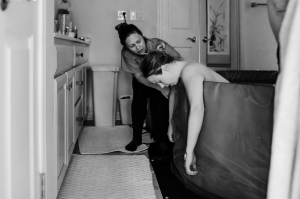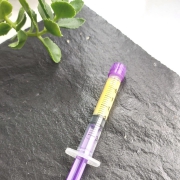Ways to increase oxytocin during a C-section birth

As we approach the end of caesarean section awareness month, we thought it was important to share ways to increase oxytocin during a C-section birth. This post is to help support and empower all you amazing mums are who are having a planned C-section birth. Sometimes, for medical reasons, a C-section may be the safer option for you and your baby rather than a vaginal birth, or you may choose to have a C-section for other reasons. Don’t be afraid to ask your consultant doctor or midwife for more information. They can explain the benefits and risks as well as discussing all your birth options. They will help and support you to make informed choices about your care and your birth.
When it comes to birth, knowledge is power.
Oxytocin, known as the ‘love hormone’, is produced in the brain in response to positive experiences such as cuddling and kissing. Oxytocin is strongly linked to our emotions – fear and anxiety can decrease it whereas, feeling calm and relaxed can increase it.
We know about its significant role in labour causing powerful uterine contractions. But its job is so much more than that. As discussed in our previous ‘birth hormones’ blog, oxytocin makes us feel good, relaxed and triggers nurturing feelings which deepens the mother and baby bond and encourages maternal behaviour. It helps to facilitate breastfeeding by helping the breasts to lactate and the milk to flow to the baby, by triggering the let-down reflex.
So, you can see why it is just as important for our brain to produce oxytocin even if we don’t labour and have a C-section birth.
So how can this be achieved?
- Oxytocin is strongly linked to our emotions. Fear and anxiety decrease its levels. Feeling calm and relaxed can increase it. So, using relaxed breathing and hypnobirthing techniques before, during and following your caesarean will help you to feel calm and more in control.
- Delayed cord clamping and allowing mum to be the first person to lay her hands on her baby.
- Bringing the baby straight to mum’s chest for skin to skin and drying off with a warm towel. There is lots of evidence that this can help mums feel immediately better about the birth of their lovely baby.
- Avoiding separation of mum and baby unless there is an urgent medical need.
- Having an opportunity to have uninterrupted bonding, perhaps delaying the ‘routine checks’ and weighing just a little longer.
- Letting mum and baby touch, nuzzle, kiss, smell and stroke each other will stimulate that all important natural oxytocin.
- The excitement. The happiness and the relief of seeing your baby for the first time. You can experience all of these at the same time.
- That special opportunity to have a quiet everlasting memorable moment with your partner or birth partner.
Having a C-section, in particular can cause lots of emotions that you may not feel prepared for. Talking about it and educating yourself about it can help.
There is no reason, why this can’t be achieved at most caesarean births. Talk to your midwife and your birth team about what is possible for your birth. They are professionals and humans, who want to make sure your birth experience is the most memorable day of your life. They will go the extra mile to ensure that your experience is the best that they can give. Don’t be afraid to ask for clear and transparent advice and to make your own suggestions.
Being honest about how you are feeling will help your whole birth team to support you.
To find out more about our C-section Birth Prep courses, just contact us.



















